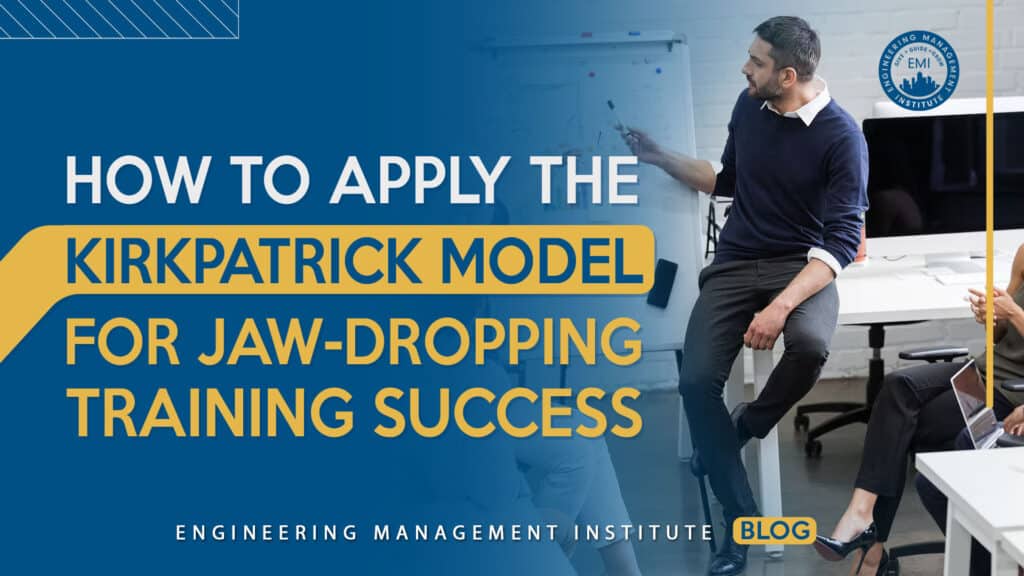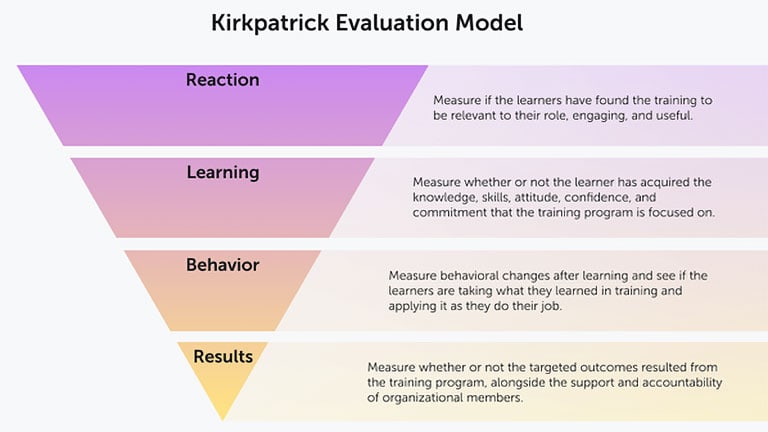In engineering, training is only as valuable as its impact on real-world performance. Whether it’s learning new software, adopting safety protocols, or improving project management, the ultimate goal is application and measurable results. But how do you evaluate whether or not a training program actually delivers? Enter the Kirkpatrick Model, a time-tested framework for assessing learning effectiveness. Developed by Donald Kirkpatrick in 1959, this four-level approach ensures that training isn’t just an exercise in theory—it produces tangible benefits in the workplace.
The Four Levels of the Kirkpatrick Model
1. Reaction – Did the Training Resonate?
At the most basic level, this measures how participants perceived the training. Was it engaging, relevant, and well-structured?
For engineers, training must be efficient and problem-focused—if it feels like a waste of time, engagement will plummet. Surveys, interviews, and quick feedback forms help gauge initial impressions. But positive feedback alone doesn’t mean the training was effective.
2. Learning – Did Participants Retain Knowledge?
The next step assesses whether the training actually increased knowledge or skills.
- Did engineers learn a new design method?
- Can they apply updated safety standards?
- Do they understand the latest project management software?
Pre and post-tests, hands-on exercises, and simulations can help quantify knowledge gained.
3. Behavior – Is It Being Applied?
This is where real value emerges. If engineers leave training and never apply what they learned, the program failed.
Managers, mentors, and project leads must observe whether training translates into better decision-making, improved workflows, or increased efficiency. This level often requires follow-ups, feedback loops, and workplace observation.
4. Results – Did It Drive Business Impact?
The final level measures the big-picture outcomes:
- Are projects completed faster with fewer errors?
- Has equipment downtime decreased due to improved maintenance knowledge?
- Are safety incidents reduced?
This step aligns training with KPIs like productivity, quality, and cost savings—making it essential for proving ROI.
Making Training Work for Engineers
For training to be truly effective in engineering environments, it must:
- Tie objectives to real project challenges
- Be hands-on and application-driven
- Include ongoing reinforcement and feedback
- Have measurable outcomes linked to performance improvements
The Kirkpatrick Model isn’t just about evaluation—it’s about ensuring that training investments lead to real-world improvements. By systematically assessing learning at all four levels, organizations can build stronger, more capable engineering teams that drive innovation and efficiency.
Would your team benefit from a structured training evaluation? Let’s discuss this in the comments below!
Sources:
https://books.google.com.ph/books/about/Evaluating_Training_Programs.html?id=BJ4QCmvP5rcC&redir_esc=y
https://portal.ct.gov/-/media/ctdn/ttt14m5handouts2pdf.pdf
https://www.mindtools.com/ak1yhhs/kirkpatricks-four-level-training-evaluation-model
https://api.pageplace.de/preview/DT0400.9781317632566_A26861078/preview-9781317632566_A26861078.pdf
https://www.valamis.com/hub/kirkpatrick-model
https://en.wikipedia.org/wiki/Donald_Kirkpatrick
https://www.kirkpatrickpartners.com/the-kirkpatrick-model/
About the Author:

Most recently, during his time working for the public sector, he has taken the role of Public Works Operations Manager. There he led quite a few public infrastructure rehabilitation projects and implemented new asset management technologies at a very young age. It is here that the passion for “fixing what’s broken” has developed.
We would love to hear any questions you might have or stories you might share about nutrition and its relation to studying.
Please leave your comments, feedback or questions in the section below.







